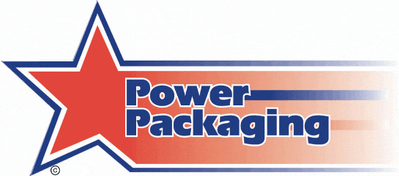Double Sided Tapes:tesa® 51966, 4965, and 51970 |
|||||||||||||||||||||||||||||||||||||||||
OverviewWhen it comes to selecting the right double sided tape for specific industrial or commercial needs, understanding the nuances between different types is crucial. This section of the article delves into three popular double-sided tapes from tesa: 51966, 4965, and 51970. Each of these tapes has unique features tailored to various applications, providing solutions for different mounting, bonding, and lamination requirements. |
|||||||||||||||||||||||||||||||||||||||||
Detailed Comparison |
|||||||||||||||||||||||||||||||||||||||||
tesa® 51966
|
 |
||||||||||||||||||||||||||||||||||||||||
tesa® 4965 Original
|
 |
||||||||||||||||||||||||||||||||||||||||
tesa® 51970
|
 |
||||||||||||||||||||||||||||||||||||||||
Key Specification Differences |
|||||||||||||||||||||||||||||||||||||||||
|
|||||||||||||||||||||||||||||||||||||||||
Summarytesa® 51966 is suited for general mounting and bonding, offering good UV and humidity resistance with a focus on lamination and component mounting. tesa® 4965 is ideal for high-stress and high-temperature applications, with a significant emphasis on sustainability and recycled content. tesa® 51970 caters to industrial mounting needs, offering good chemical resistance and specific temperature resistances for short and long-term applications. |
|||||||||||||||||||||||||||||||||||||||||
RecommendationsFor high-temperature and sustainable applications, tesa® 4965 Original is recommended. For general mounting and lamination, tesa® 51966 is suitable. For industrial applications requiring chemical resistance and specific mounting needs, tesa® 51970 is the best choice. |
|||||||||||||||||||||||||||||||||||||||||
Interested in Any Double Sided Tapes?
Contact us today to learn more about our Double-Sided Tape options and how they can meet your needs.
Request a Quote
Double-Sided Tape: A Comprehensive Guide |
|
|
Double-sided tape might seem mundane at first glance, but its versatility makes it a true unsung hero in many fields. Let’s dive into the world of double-sided tape, exploring its types, uses, and tips for making the most of this handy tool. |
|
Understanding Double-Sided TapeDouble-sided tape is essentially a sticky adhesive sandwiched between two release liners, allowing it to bond two surfaces together seamlessly. The variety in its thickness, strength, and adhesive types makes it a perfect fit for countless applications. |
|
Varieties of Double-Sided Tape |
|
Double-Sided Mounting TapeFeatures: This tape is the go-to for securely mounting items without the need for nails or screws. Its thickness provides robust adhesion, capable of holding substantial weight. Uses: Ideal for hanging posters, signs, frames, and mirrors. It’s also great for various home improvement projects. Benefits: Offers a clean, hole-free alternative to traditional mounting methods, suitable for painted walls, glass, and metal. |
|
Double-Sided Velcro TapeUnique Properties: Featuring hook-and-loop fasteners, this tape allows for a strong yet easily removable bond, perfect for repeated use. Advantages: Excellent for temporary applications like cable management, organizing tools, or attaching accessories. Practical Uses: Common in home organization, event setups, and the garment industry for quick adjustments. |
 |
Automotive Double-Sided TapeUses in Automotive: Designed to endure extreme temperatures, UV rays, and vibrations. It’s perfect for attaching trims, emblems, and other car parts. Benefits: Provides a durable bond, eliminating the need for screws and bolts, thus reducing rust risks. Installation Tips: Ensure surfaces are clean and dry, press firmly for good contact, and allow curing time for maximum adhesion. |
|
Cloth Double-Sided TapeCharacteristics: With a fabric backing, this tape is flexible and conforms to irregular surfaces, often used in arts and crafts. Applications: Great for fabric hemming, securing carpets, and creating temporary bonds on textured surfaces. Benefits: Easy to tear by hand, strong and durable for various surfaces. |
 |
Why Choose Double-Sided Tape?Efficiency: Simplifies many tasks, eliminating the need for traditional fastening tools. Aesthetics: Provides a hidden, clean look as it stays between surfaces. Versatility: Available in various strengths and types, suitable for crafting to industrial applications. |
|
Selecting the Perfect TapeConsider the following when choosing your tape: Surface Type: Different materials require specific tapes. Weight: Heavier items need stronger adhesion. Environmental Conditions: Think about exposure to elements like temperature, humidity, and UV light. |
|
How to Use Double-Sided TapePrepare the Surfaces: Ensure cleanliness and dryness. Cut the Tape: Measure and cut to the required length. Apply the Tape: Press firmly onto one surface, remove the liner as you go. Press and Hold: Align and press the second surface firmly, hold for a few seconds to ensure adhesion. |
|
Common Mistakes and TipsInsufficient Surface Preparation: Clean thoroughly for strong adhesion. Wrong Tape Choice: Ensure the tape suits the material and weight. Improper Application: Press evenly for a solid bond. |
|
Removing Double-Sided TapeHeat: A hairdryer can soften adhesive for easy removal. Solvents: Use rubbing alcohol or adhesive remover. Scraping: Gently lift tape with a plastic scraper or fingernail. Different Surfaces: Painted Walls: Use heat and peel gently to avoid damage |
|
